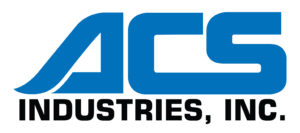The Benefits of Rapid Prototyping
Beyond improving market fit, validating functional viability, and identifying future problems in mass production, effective rapid prototyping can have the following benefits:
Clear Vision: A physical prototype can help your whole team see the product vision more clearly, which in turn helps your designers stay focused on what’s most important. “You really don’t understand your idea until it takes physical form,” said Ryan Neil instructor of Pasco Rapid Prototyping Boot Camp in Florida (Blazonis, 2024).
User-Centric Design: User testing of prototypes can provide crucial feedback about how the end-user interacts with the product. There might be unforeseen difficulties in installation or use that can be corrected at this stage ensuring a higher level of customer satisfaction.
Error Identification: Mistakes in product design or the production process can be uncovered and corrected through rapid prototyping, ensuring a higher level of finished product quality.
Cost-Efficiency: Mistakes in mass production can have massive financial implications. Prototyping allows firms to iron out a perfect product at a far lower cost.
Speedy Development: Rapid prototyping often involves the production of multiple iterations of the product that are tested and improved upon in succession. Several different prototypes can be produced at once, further improving your speed to market.
Risk Management: Successful rapid prototyping effectively mitigates the potentially disastrous risk of error in mass production. Reworking a second prototype will be far less expensive than halting a mass production line in order to correct errors.
Iterative Improvement: Tangible prototypes provide a fantastic opportunity to generate concrete performance and fit feedback. Multiple rounds of prototype production and testing result in an ever-improving product design.
Boosted Creativity: Designers and Engineers are more likely to try out new ideas and innovations if they know there will be a prototype made. Without the prototyping step, designers will be reticent to try new things for fear of unforeseen problems in production.
Streamlined Development: Prototyping helps the whole team focus on the most important product characteristics; instead of focusing on small details, a concrete prototype allows them to focus on the overall performance of the final product. This narrowed focus will result in a streamlined development process (Douglas, 2023).
Prototyping in Green Energy
We are seeing some of the consequences of inadequate prototyping play out in real time in the green energy industry. BMW recently cancelled a €2 billion deal with Northvolt to produce battery cells in a Swedish gigafactory because of delays and technical issues associated with ramping up production. This Northvolt factory was expected to be a major turning point in the European market’s efforts to contend with industry dominating Asian battery cell manufacturers. This lack of confidence in the new gigafactory from one of the world’s largest auto manufacturers is a major setback.
There are seven similar factories currently slated for production in India that could face similar problems should they fail to effectively prototype. India is pushing for the establishment of more Rapid Prototyping Centers (RPCs) aimed at reducing the go-to-market time and production costs for battery manufacturers. These centers would assist firms that are hampered by the typical prototyping challenges of delays due to long lead times, lack of access to testing equipment, or failure to replicate industrial processes during these initial stages (Garg, 2024). Indian RPCs will have a major impact on the success or failure of India’s efforts to carry out the world’s largest renewable energy expansion plan.
ACS’s World Class Prototyping Department
AT ACS we have been performing in-house rapid protoyping for decades. We create prototypes for all new automotive and green energy products. The vast majority of ACS products consist of critical components that fit into external systems and assemblies. This means that individual product characteristics are incredibly important for final system function, but it also means that our customers receive a product that is unique to them and specifically fine-tuned for their application. Iterative rapid prototyping, paired with 2D and 3D modeling has allowed us to quickly modify designs to ensure both perfect fit and ideal performance. Decades of custom part production for the automotive industry has helped us streamline our prototyping process to an ever-increasing degree of efficiency.
Give ACS a call today to see how we can put this time-tested and continually improving production system to work to deliver the perfect components to you, no matter what your application is.
Sources
Blazonis, S. (2024, November 2). Pasco Rapid Prototyping Boot Camp helps entrepreneurs turn ideas into reality. Spectrum Bay News 9. https://baynews9.com/fl/tampa/news/2024/11/02/rapid-prototyping-bootcamp
Douglas, C. (2023, December 18). Benefits of prototyping – visily. Visily. https://www.visily.ai/blog/benefits-of-prototyping/
Garg, R. (2024, July 4). Prototyping first, gigafactory next: Setting up pilot battery fabrication facilities need of the hour. Down to Earth. https://www.downtoearth.org.in/energy/prototyping-first-gigafactory-next-setting-up-pilot-battery-fabrication-facilities-need-of-the-hour
Kircher, M. M. (2016, November 22). James Dyson on his vacuum failure and success. The Vindicated. https://nymag.com/vindicated/2016/11/james-dyson-on-5-126-vacuums-that-didnt-work-and-1-that-did.html
The Gleaner. (2024, July 23). Growth & Jobs | Improve the quality of local products through prototyping – JBDC. News | Jamaica Gleaner. https://jamaica-gleaner.com/article/news/20240723/growth-jobs-improve-quality-local-products-through-prototyping-jbdc


